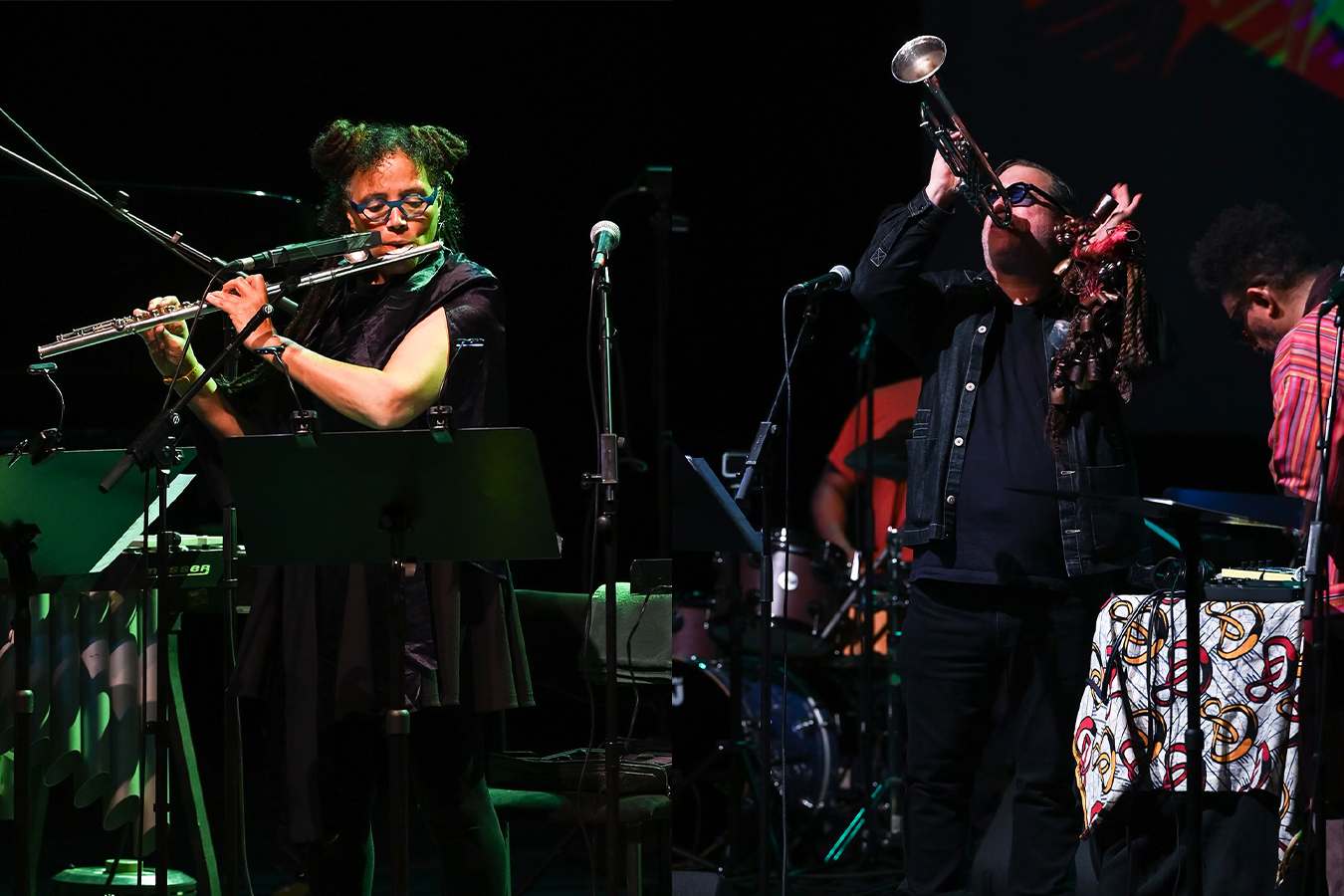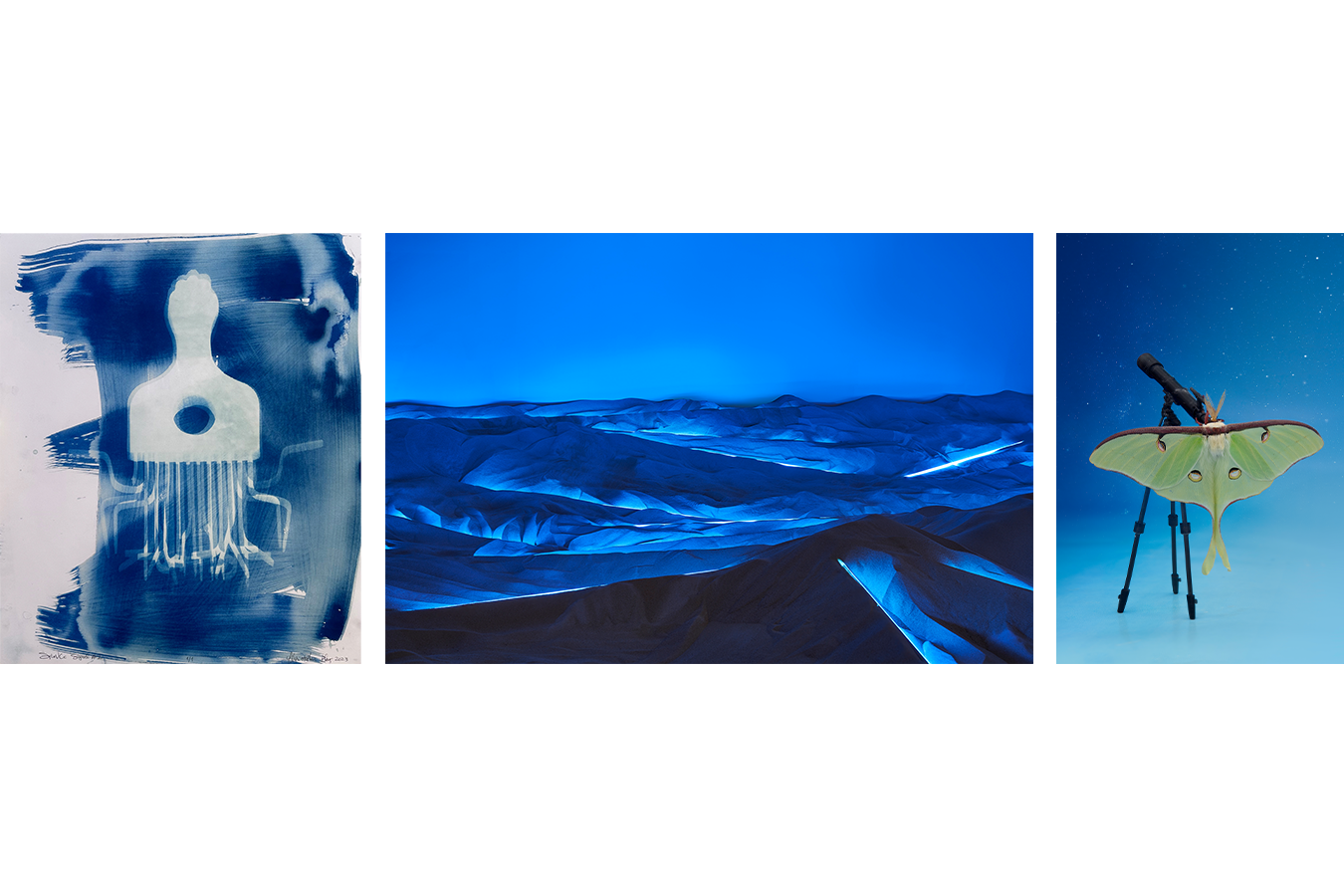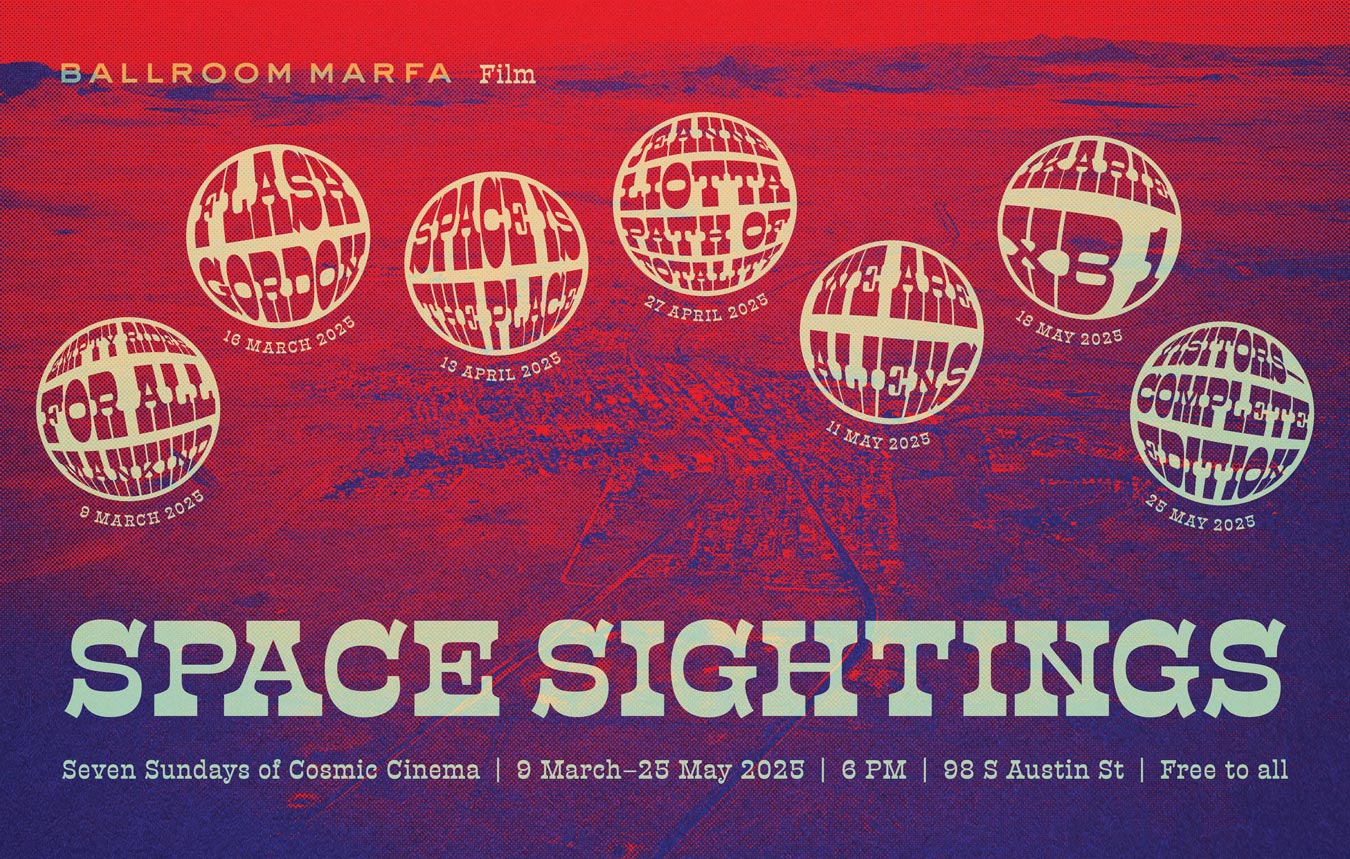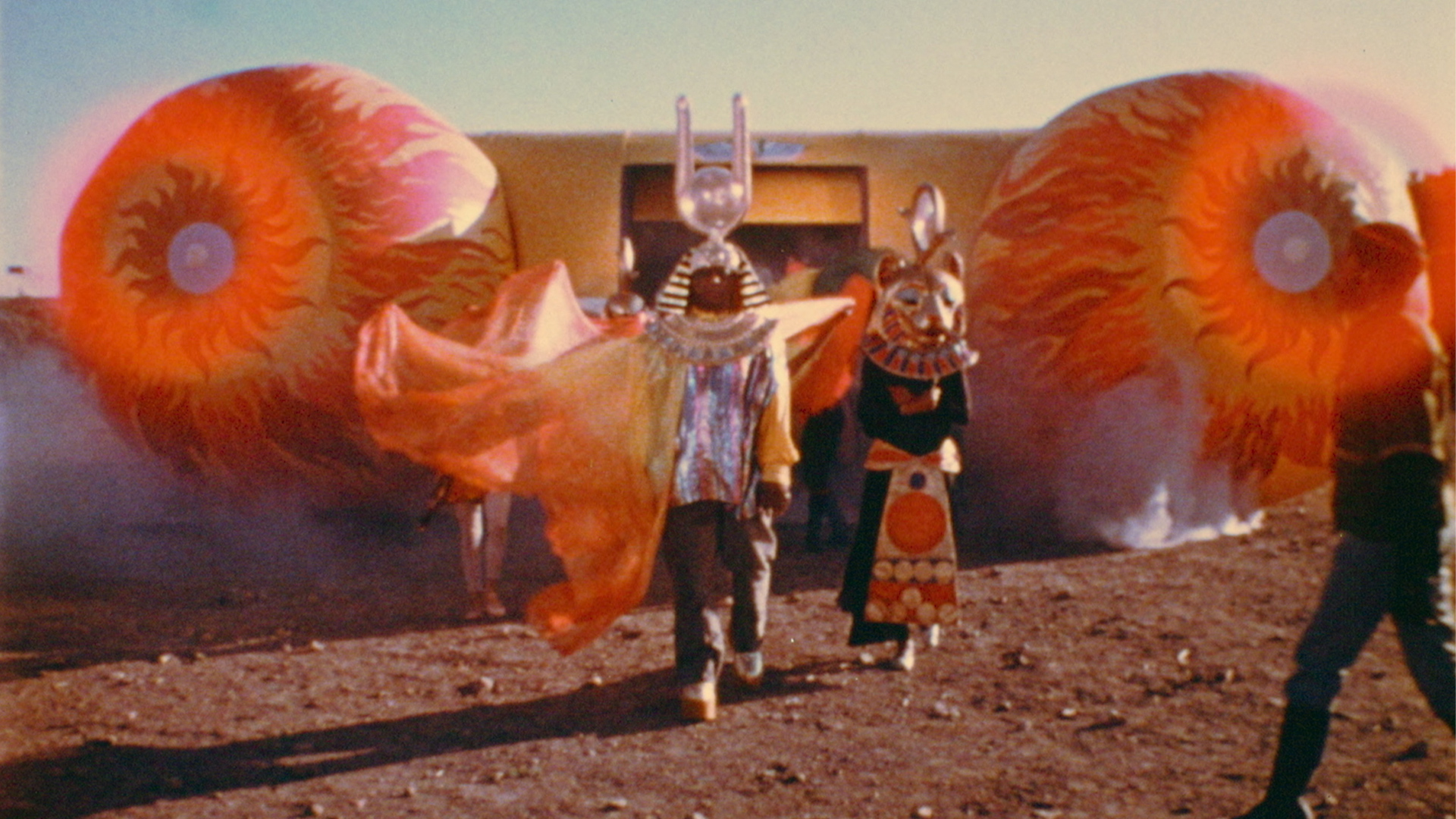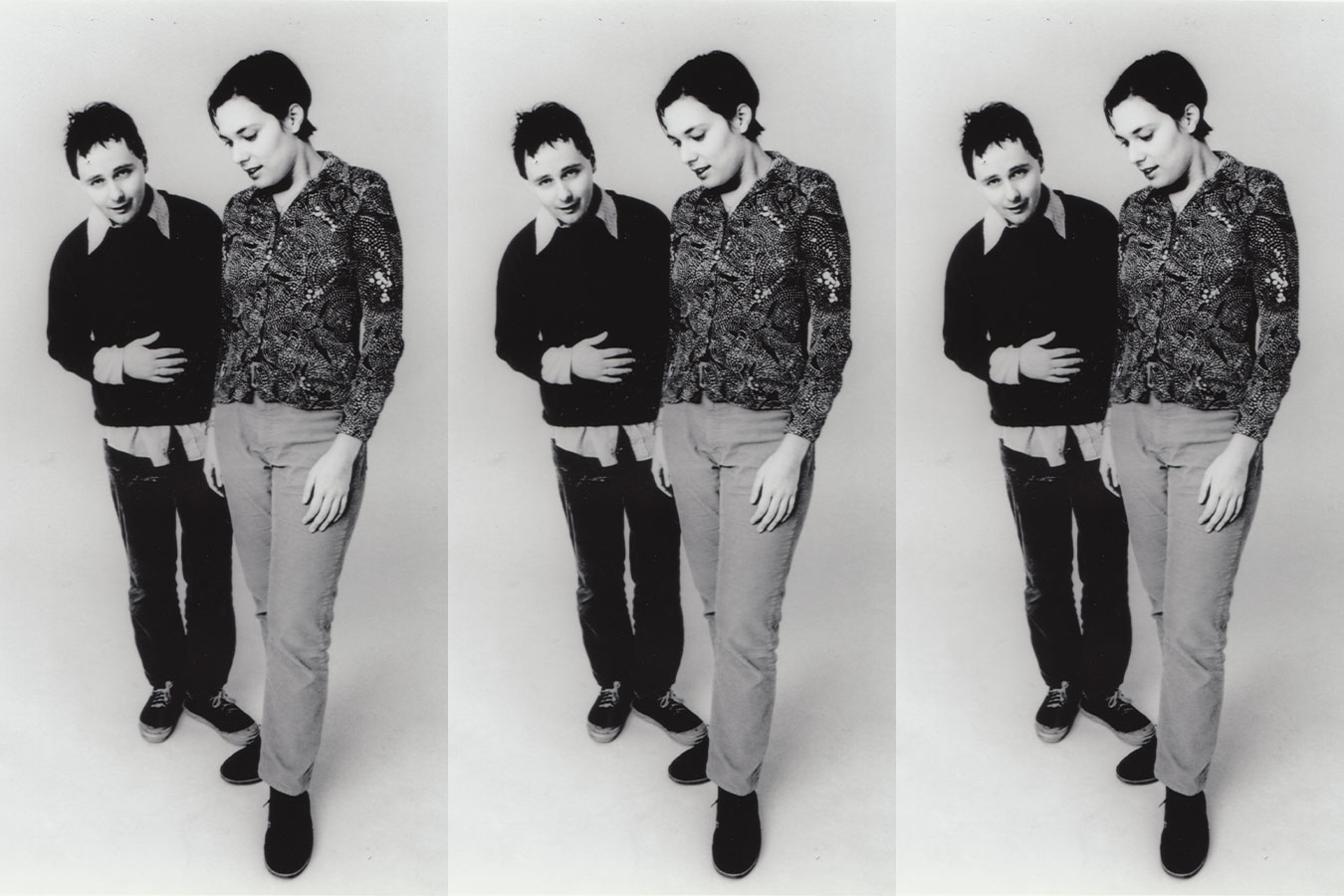
Le Révélateur
with live score by Mary Lattimore & Jeff Zeigler
December 30, 2013
Crowley Theater, Marfa, Texas
Doors at 7 pm ∙ Show at 7:30 pm
Free
Listen to Marfa Public Radio’s Talk at Ten radio interview with Mary Lattimore & Jeff Zeigler, December 30, at 10 am on KRTS 93.5 FM or via their online stream.
———————————————
Celebrate the coming new year with Ballroom Marfa! For our fifth annual New Year’s film program, we’ll host a film screening of Philippe Garrel’s 1968 film Le Révélateur, with a live score by Philadelphia harpist Mary Lattimore and synth player Jeff Zeigler.
Mary Lattimore is a classically trained harpist whose collaborations have seen her working with such esteemed luminaries as Kurt Vile, Meg Baird, Thurston Moore, Ed Askew, Fursaxa, Jarvis Cocker and the Valerie Project. On her debut record, The Withdrawing Room, she found a worthy sideman in Philadelphia’s Jeff Zeigler, whose contemplative Korg echoes and holds a mood for Mary’s runs.
Zeigler has amassed quite the resume in recent years, between his space-rock outfit Arc in Round and his production work for local luminaries Kurt Vile, Purling Hiss and The War on Drugs. Zeigler’s also been expanding into the solo / collaborative experimental zone, playing solo shows with Lattimore and opening for English ambient artist Benoît Pioulard.
We talked with Lattimore about her interest in avant-garde film, her approach to improvisation and her plans for New Year’s Eve in Marfa.
How would you describe your music to new listeners?
I would describe it as sort of underwater, spacey harp through effects and delay, loops of decaying noise, droney sometimes, ethereal crushed-up diamond sounds. Jeff plays a Korg Mono/Poly synth and does cool textural stuff, plays beautiful, haunting melodica that sounds like a sad, distant train, and plays guitar, too. It’s gonna be fun. Our sets are usually all improvised, but with this one we are establishing themes and trying to be thoughtful about the changing scenes.
Why did you choose Le Révélateur for this project?
I consulted a very film-knowledgable friend. He suggested a few silent films and I checked them out and this one seemed to have some really memorable images. It’s a very strange film, very stunning, filmed in 1968.
What else can you tell us about the score you and Jeff will be performing?
It’ll be thought-out improvisation, with harp through a Line 6 looper and melodica, guitar, and synth. It’s a little over an hour long and will probably be a combination of melodic, hypnotic strings and maybe some harsh-ish noise. We want to be conscious of space, too, and also to incorporate minimal moments because the images are so affecting on their own.
Do you have any other experience doing film scores? Or with filmmaking in general?
I have done a few film projects. I was a member of this 11-person ensemble that composed an alternate score for the Czech New Wave Film Valerie and Her Week of Wonders in 2007. We traveled around with the original print of the film and performed in theaters, recorded it and Drag City put out the record. I learned a lot from the way we composed the music together. Recently, I did a soundtrack for a film that’s set in Iceland. I played on the score for the documentary Marina Abramovic – The Artist Is Present. The interaction between music and story/visuals, how they can complement each other to create a singular, memorable experience is something I really love. Jeff recently did an original live score for 2001: A Space Odyssey with our friend Dave (Nightlands) as a cool, creative project. Hopefully, our ideas will be true to the vibe of this gorgeous, weird film.
How does your background in improvisation inform this work?
Whenever I improvise or whenever Jeff and I improvise together, we’re always trying to paint a picture or to inspire a mood and often there’s a narrative structure where things get stirred up in the middle and resolve themselves by the end. But I think this one should contain a lot of in-the-minute decisions and negative space that will make it hopefully a unique performance that we can only half-predict, so that’s exciting.
What other projects are you working on?
Jeff and I are working on a Lattimore/Zeigler Duo record that we’re recording at his studio, Uniform Recording in Philly. I just played on the new Sharon Van Etten record, which will be out next year. We are going to try to repeat our Le Révélateur performance in Philadelphia, too, so that’s in the works. Got some upcoming gigs with my mom, who is also a harpist, and we’ll be playing carols to spread some holiday happiness. Lots of fun stuff ahead!
Is this your first trip to Marfa? What do you know of our town?
Yes, it’s my first visit to Marfa! I don’t know much, but I have a bunch of friends who have visited and who’ve fallen in love with it, so I’m psyched. Have read about the Marfa lights and the great art. I love that I get to spend New Year’s Eve and New Year’s Day in this far-away place – great way to start 2014. Jeff has been before while on tour with his band. Really looking forward to it!
What are your plans for Marfa and Far West Texas beyond your performance?
Hmm, I’m not sure. I guess to just relax, hang out, walk around. We are staying for a few extra days. I have a close friend Rachel who moved there recently. My pal Matt, who owns the excellent Harvest Records, is coming from Asheville, NC.

